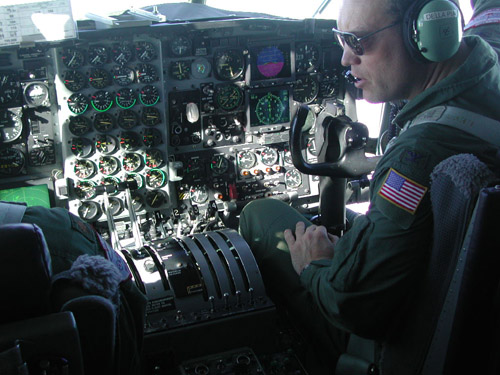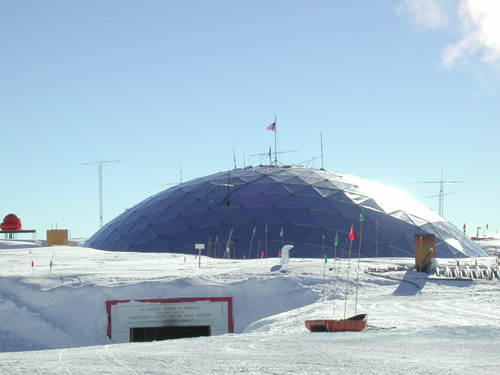
Friday, December 15, 2000
Our pilot made a very smooth landing at the pole. You can see a picture of the cockpit with members of the flight crew. The crew belonged to the New York National Guard. They were all very professional, friendly and extremely well trained. They really showed how competent is our military.

At the South Pole, the airstrip is packed snow. Skis make a great surface to land. As soon as our plane stopped, a bus picked us up. It sure was cold outside. The temperature was about -27 F, but no wind. The bus took us down a slope into a huge geodesic dome. This shows the entrance.

We headed off to an orientation in one of the buildings inside the dome. There, we were given our room assignments (no need to build an igloo.) We were given important safety information. For instance, it is real important to drink lots of water. We are at an elevation higher than 10,000 feet. The air is extremely dry. We were told to rest for several days so that our body can acclimate to the elevation.
As I rest, I am learning how to find things around the area and plan what I came to the pole to do. Last year I was involved in a project to build Digital Optical Modules (DOM). The DOM is a new idea how to store the light signals. Rather than send the data to the surface to be measured, it measures the signal in the ice. The big advantage is that when analog information is sent 3 km to our data collection computers, information is lost; while digital signals do not lose information when sent through those distances. Last year in a heroic effort, our group managed to produce 41 working modules and deploy them in the ice. This year we will do crucial tests to determine if the DOM's can be used in future neutrino telescopes.
As I am getting used to the dryness and cold, I just took a short walk to the Earth's South Pole. The sun was bright and the weather was a warm -20 F.
Howard Matis
South Pole